How to Create a Successful Customer Loyalty Program For Your Brand
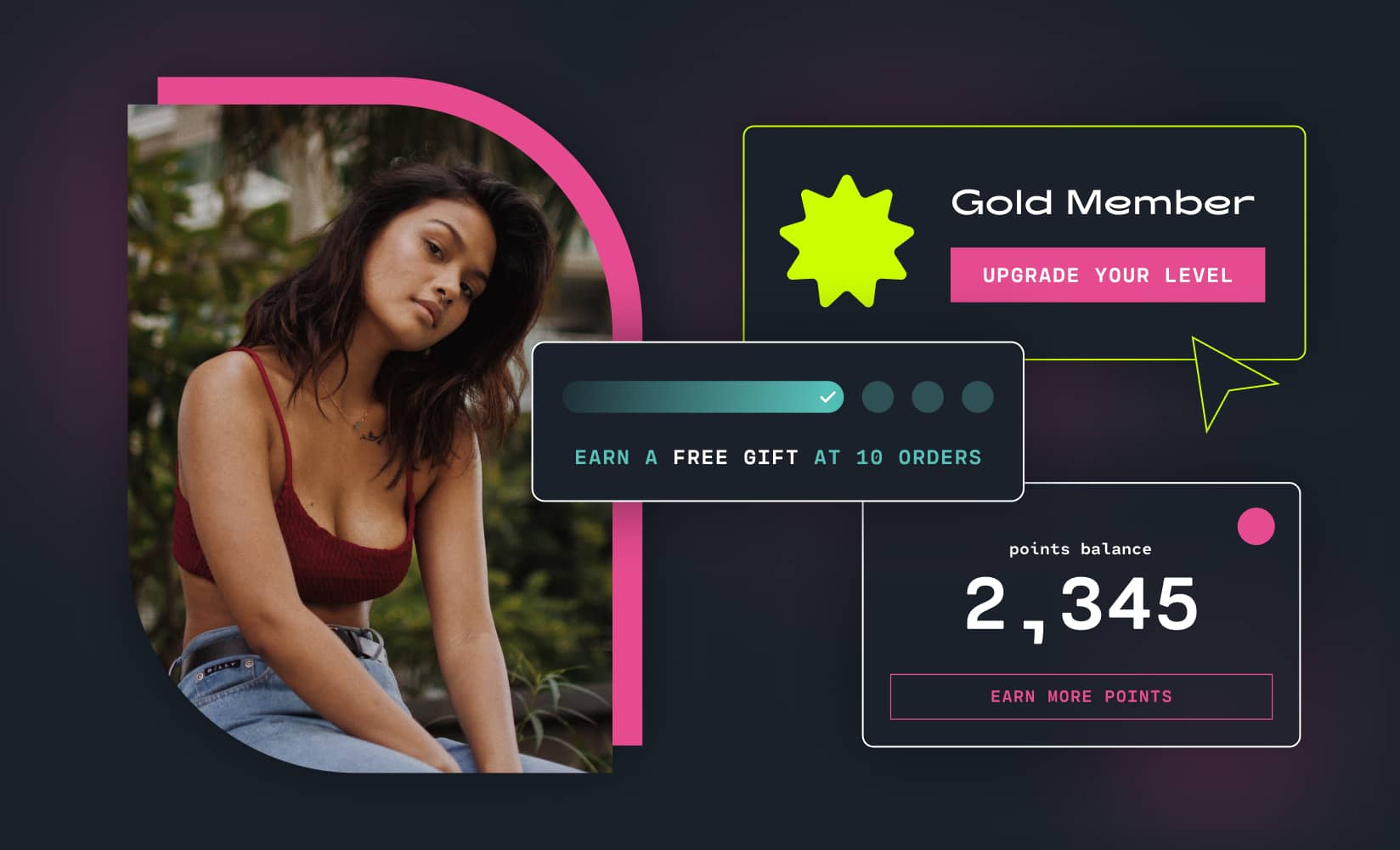
Any scaling ecommerce brand knows that keeping new customers coming in the door is hard work.
But did you know:
It costs brands five times as much to convert new customers than it does to keep existing ones? What’s more, brands have a 60-70% chance to sell to existing customers, whereas they have only a 5-20% chance to sell to new customers.
Considering the power of familiarity and already-built trust, you may want to consider introducing a loyalty program to your ecommerce experience if you haven’t already.
Customer loyalty programs are a great way to tap into both new and returning customers and build brand equity.
If you’re wondering how household brands like Starbucks, REI, or Nordstrom get the most from their loyalty programs, keep reading.
Today, you’ll walk away with everything you need to know about creating a successful loyalty program fit for your brand.
Skip ahead:
So, what is a customer loyalty program?
A customer loyalty program is a strategy where brands reward customers who engage with them often—whether it be through purchases, social media participation, or other forms of engagement—to increase customer retention and loyalty.
Essentially, the more someone shops or engages with the brand, the more they’re rewarded.
The types of customer loyalty programs
There are many ways brands structure successful loyalty programs, and the way you build yours might look different from your competitors.
Let’s look at some of the most common types of customer loyalty programs out there:
Points
Customers earn points for each purchase or dollar they spend (depending on how you’ve set up your program), like manicure brand Olive and June’s rewards program.
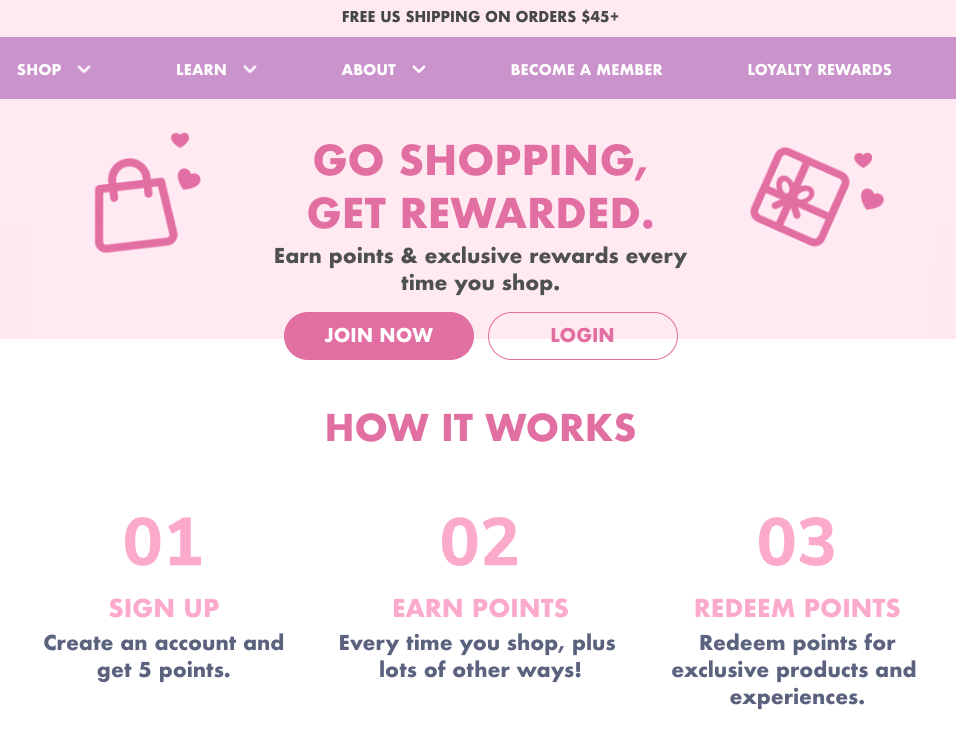
Customers get points just for signing up and collect more as they shop (or interact with Olive & June in other ways).
This way, customers are incentivized to start collecting points since they aren’t starting from zero.
Subscription
Customers pay a recurring fee (monthly or annual) and receive rewards or gain access to benefits like discounted products or free shipping.
Amazon Prime is a popular example of a successful subscription customer loyalty program.
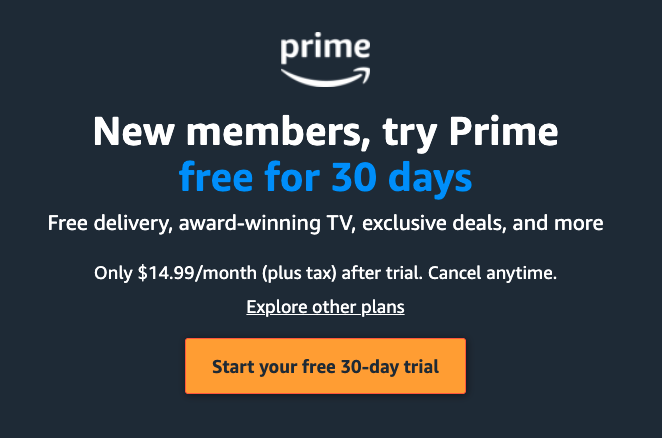
When you sign up for Prime, you not only get a 30-day free trial but you get access to other perks like Amazon’s Prime Day sales.
Levels/tiers
When customers sign up for a program with levels (or tiers), they start at the bottom and work their way up as they purchase and engage with the brand.
A great example is My Abercrombie Rewards from Abercrombie:
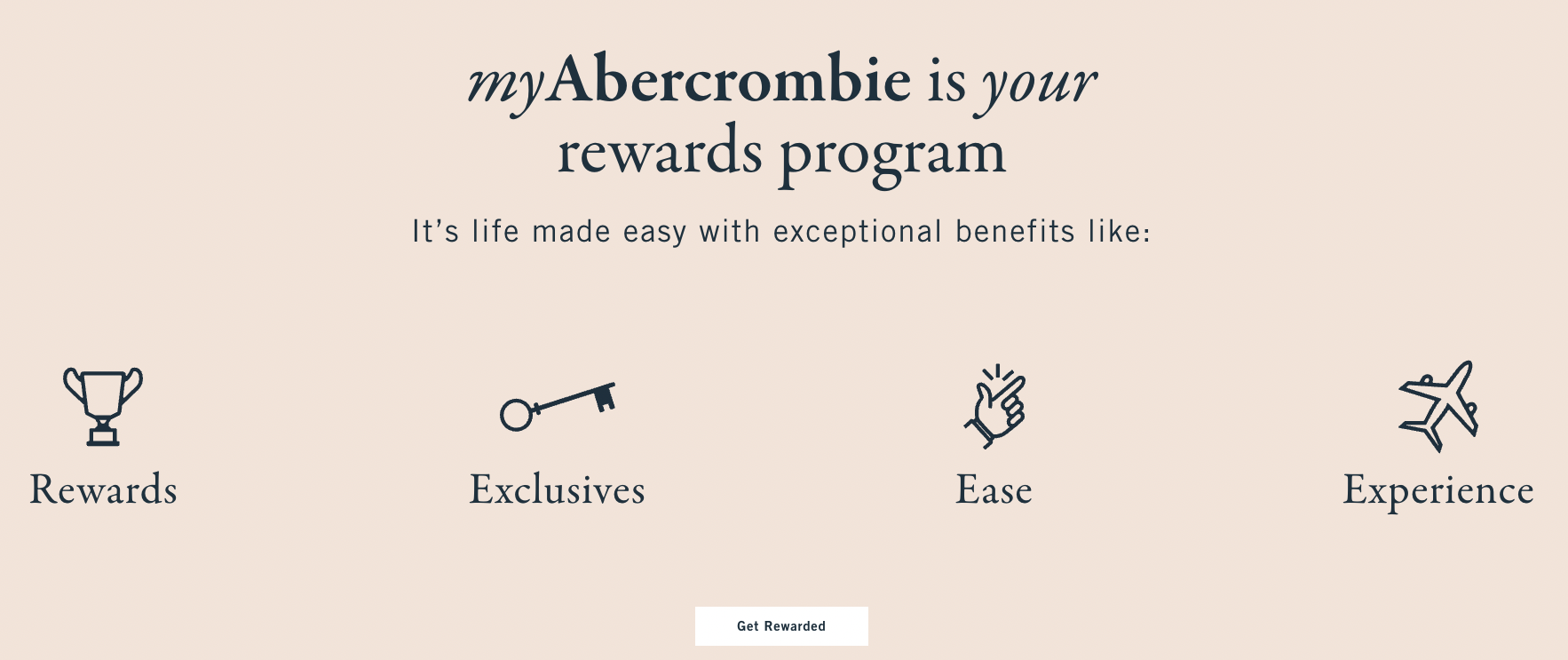
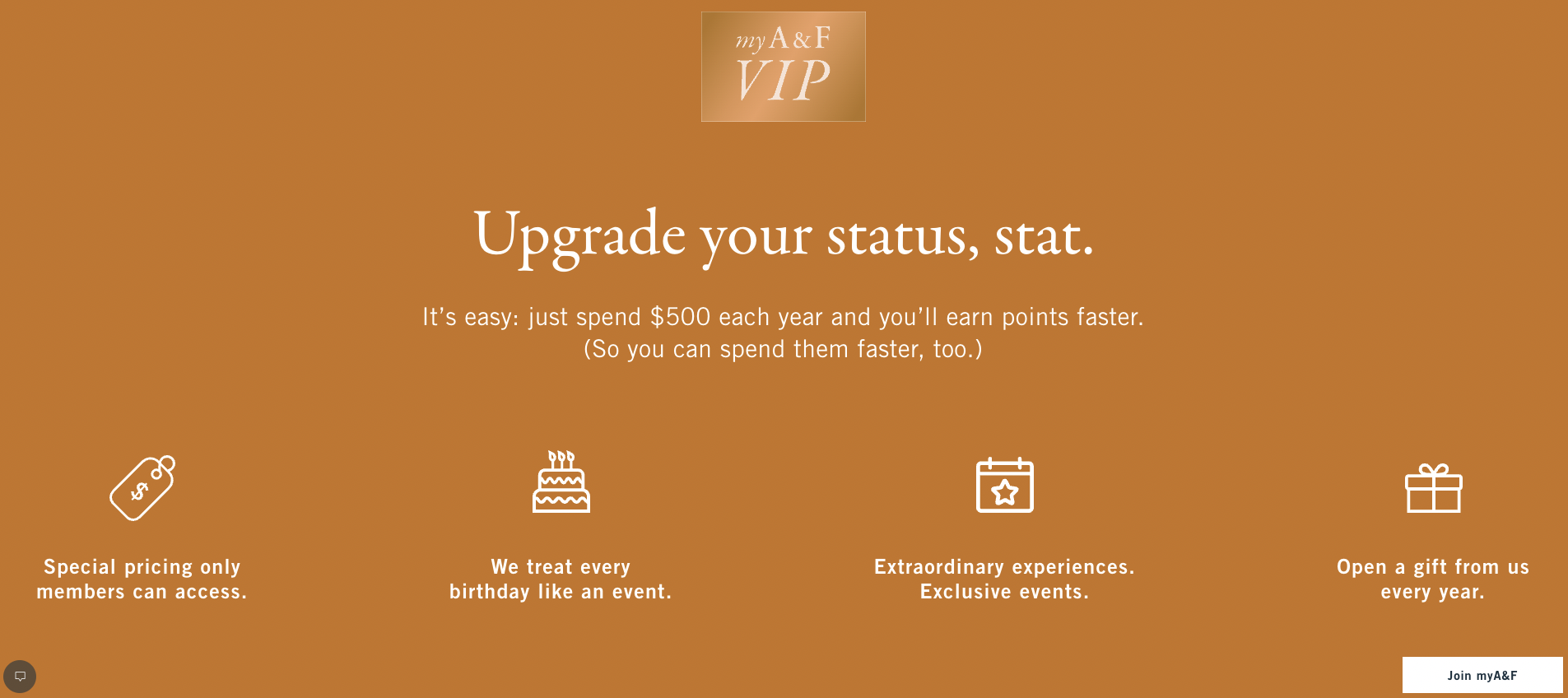
Every time an Abercrombie customer with My Abercrombie Rewards shops, they know they’re working toward unlocking exclusive benefits like events, a yearly gift, and more.
#cta-visual-pb#<cta-title>Create high-converting pages with ease<cta-title>Design attractive, effective pages faster than ever before. Unlock your website’s full potential with targeted landing pages.Start building for free
The benefits of customer loyalty programs
Brands launch customer loyalty programs for many reasons, but they all have one thing in common: boosting revenue.
Let’s look at some of the top benefits of loyalty programs for ecommerce and DTC brands:
1. Increases customer retention
One of the most significant benefits of customer loyalty programs—and arguably the main reason why brands consider them in the first place—is the impact they have on retention rate.
The average customer retention rate in ecommerce is 30%, so if you’re trending below that mark, a customer loyalty program could be a great way to boost your brand’s rate.
Successful, value-based customer loyalty programs not only encourage customers to spend more but keep them around for longer.
2. Builds a connection with your customers
Every brand is seeking (read: competing for) customer trust. Making customers feel seen and appreciated is the foundation of that trust.
By offering rewards to loyal customers, you show—in a different way from, say, customer service or product quality—how much you value them.
For example, tiered customer loyalty programs reward customers who have spent a specific dollar amount by unlocking new perks they otherwise wouldn’t have—like free products or exclusive access to new collections.
Starbucks Rewards gives customers who reach certain star levels varying free items, which not only acts as an incentive to keep purchasing but says to customers, “we value your business.”
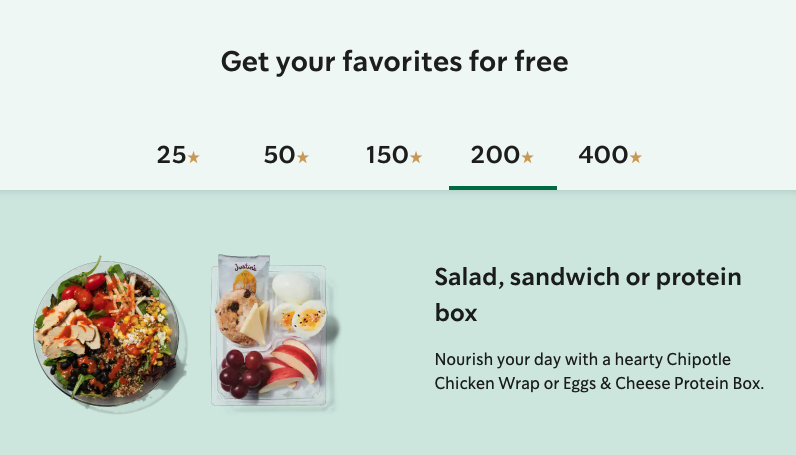
3. Offers an opportunity to learn more about your customers
Another way to learn more about your customers and their behavior? What ecommerce brand wouldn’t want that!
Customer loyalty programs serve your customers, but they also provide you with supplemental data about shoppers—like their purchase motivations, interests, and more.
A study from Yotpo found that 49.9% of customers are willing to share personal information, like specific products they’re interested in, with a brand to receive personalized offers and other loyalty perks.
With this information, you can optimize other campaigns and marketing efforts to double down on offering value.
Loyalty programs also help you identify who your biggest fans are; customers who continue to refer you to family and friends should be rewarded.
But just how effective are customer loyalty programs?
Loyalty programs are a great way to introduce your products and brand to new customers while they gain an incentive to make a repeat purchase.
These programs also keep existing customers happy and engaged.
But remember, loyalty is a two-way street. Take beauty empire Sephora, for example, which has one of the most robust loyalty programs in ecommerce with 17+ million members in North America, who are responsible for a whopping 80% of sales.
A big part of what makes Sephora’s loyalty program so successful is its emphasis on community and the emotional aspects of loyalty (like birthday surprises and new member gifts), says VP of Loyalty at Sephora, Allegra Stanley:
“The way we think about loyalty is that our clients are the core of everything we do. We are driven by what our customers love and want more of. So it’s not about what their loyalty demonstrates to us, but what we can deliver to our clients that creates the most meaningful and connected experience with our brands.”
Sephora’s long-running customer loyalty program launched in 2007, and as the program gained traction over the years, new tiers were added.
In 2013, a tier was added for customers who spend $1,000+ per year with the beauty brand, which, Stanley says, is responsible for a significant amount of sales.
Ultimately, while there’s not a great deal of data available on the exact revenue of various loyalty programs (proving their effectiveness).
However, it’s safe to say that programs like Sephora’s (with an impressive duration of 13+ years!) aren’t just responsible for a good deal of revenue for the bottom line but also deliver qualitative customer satisfaction that makes the maintenance of the program worthwhile.
Let’s look at a few other great examples of successful customer loyalty programs in the wild.
Examples of customer loyalty programs in action
Not all rewards programs are created equal. Some are more complicated than they should be, while others hit the nail on the head—like these below.
Have a look to see what they offer repeat customers for inspiration on what you might provide in your program, too:
Italic Bold (subscription)
Italic, a retail marketplace offering discounted products by cutting out the middleman, offers a subscription program loaded with perks.
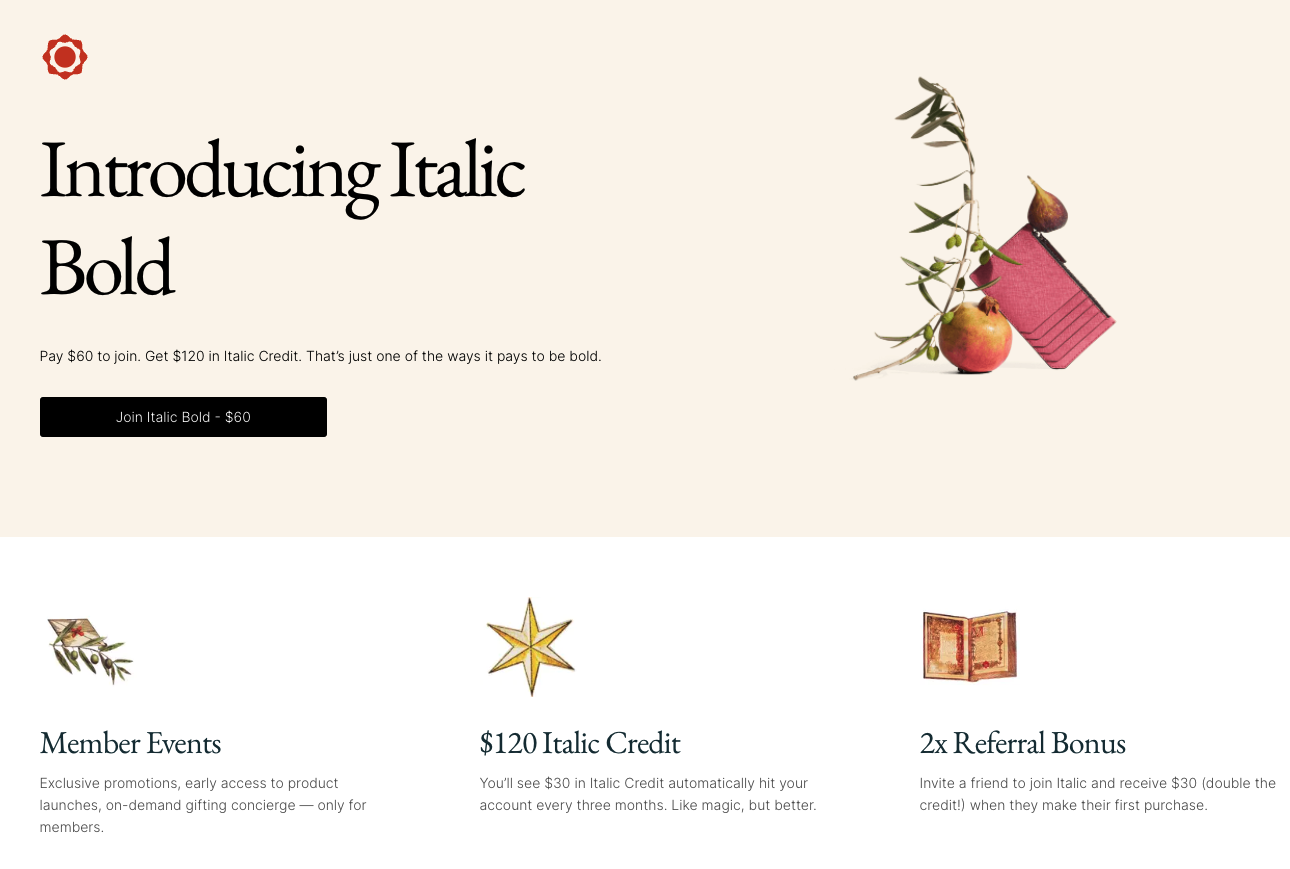
Italic Bold offers various rewards to members, including:
- Member events
- Referral bonuses
- $120 of store credit
- Free shipping and returns
What makes this program so great: Italic Bold incentivizes customers to not only purchase more (with perks like store credit and bonuses), but it encourages referrals to friends and family to unlock more credit, leading to more sales.
Tarte Perks (levels)
Tarte, a natural cosmetics brand, offers an enticing VIP program for loyal customers and makeup lovers alike.
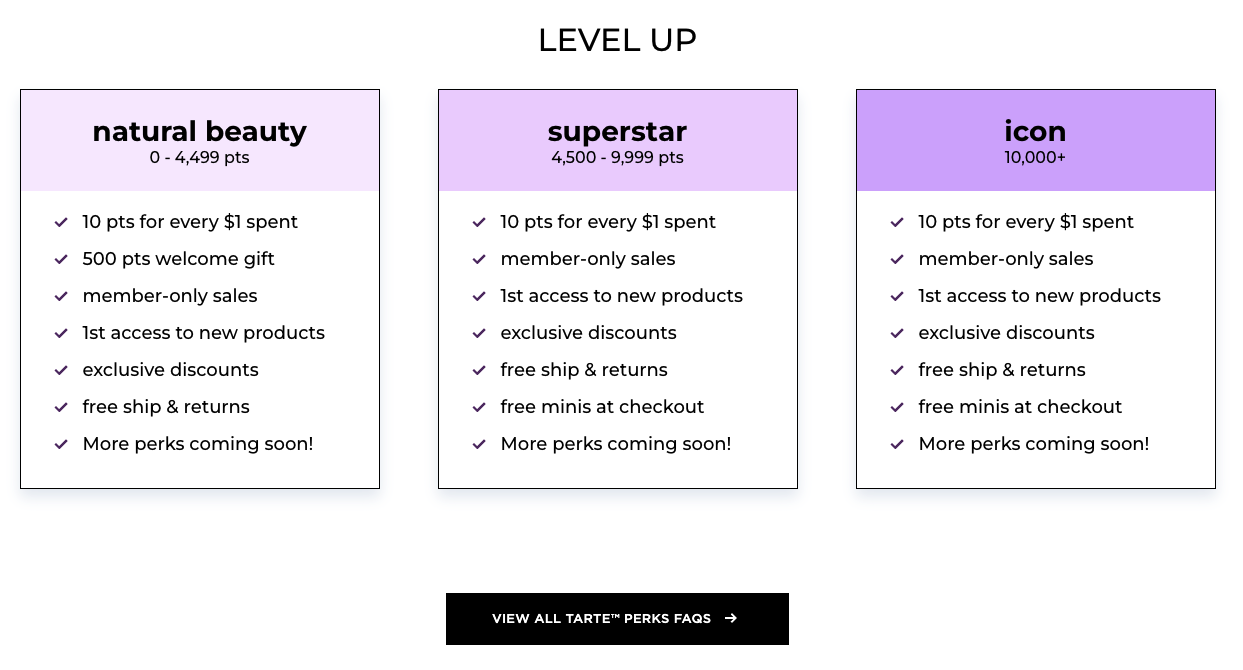
Tarte Perks offers customers across levels:
- Member-only sales
- Free shipping and returns
- Early access to new products
- Free minis at checkout
What makes this program so great: Tarte Perks encourages customers to spend more to collect points and set “goals” to unlock different tiers (which means more perks). Customers win right away but have new benefits to look forward to unlocking, which keeps things interesting.
Blumetopia (points)
Skincare brand, Blume, knocks it out of the park with this customer loyalty program (how amazing is this website?).
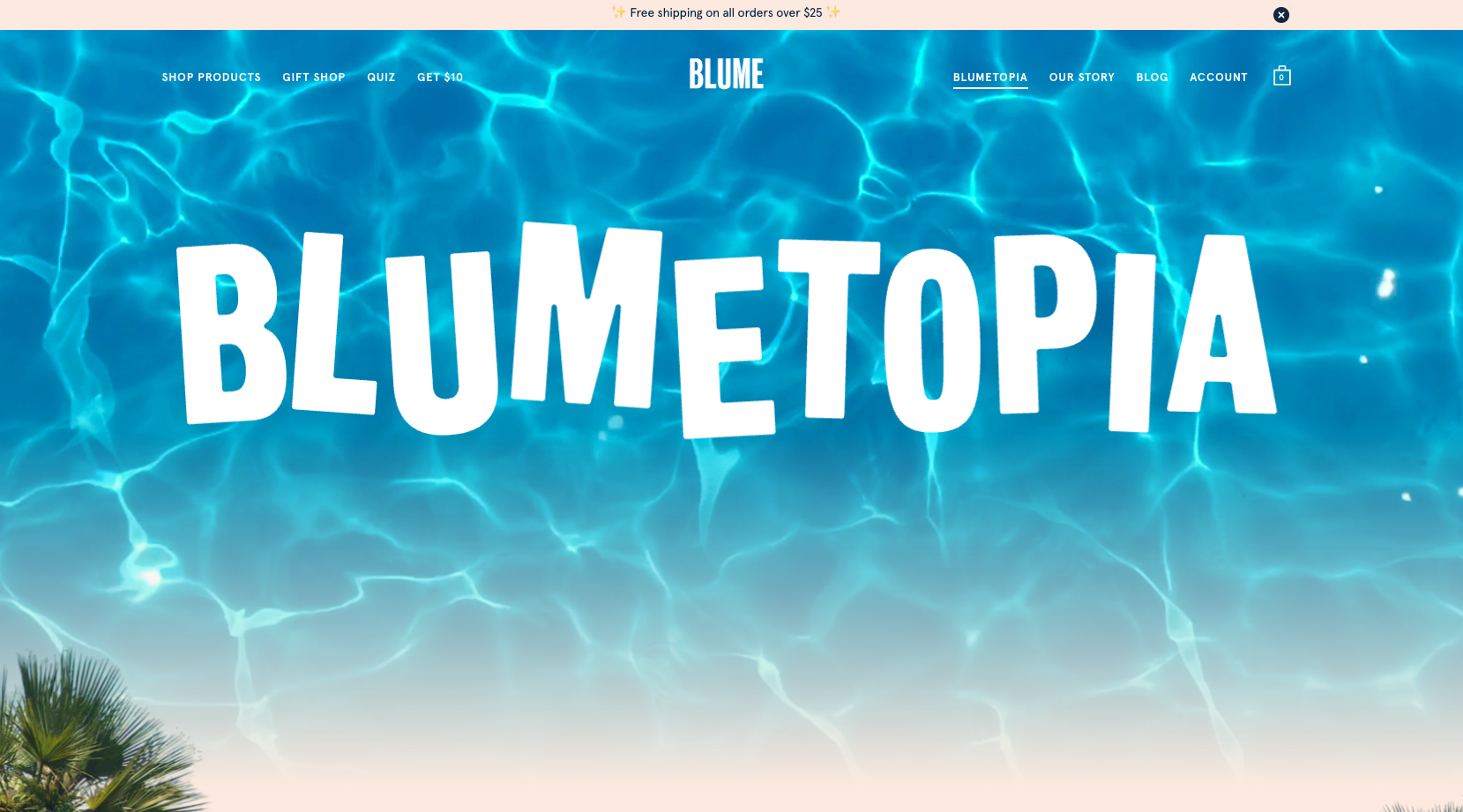
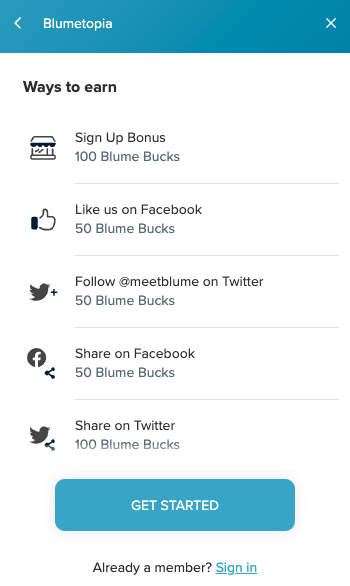
Blumetopia makes it easy for customers to start earning points even without purchasing and offers benefits like:
- Free to join
- Earn points by purchasing, leaving reviews, engaging with Blume
- Birthday points
What makes this program so great: In addition to a points system, Blumetopia also includes a friend referral program that acts more like a tiered program, allowing customers to unlock promotions, signature ‘Blume Bucks’, and more.
How to start your own customer loyalty program
Ready to build a customer loyalty program for your brand? Let’s look at how to approach this step-by-step.
Step 1: Figure out what drives your customers
Understanding what your customers value is key.
They likely value many things when it comes to online shopping—like discounts, early access to new products, etc—but it’s crucial to identify these perks early in your planning. This will be the basis of your customer loyalty program.
Next, identify their shopping behavior.
Are they likely to purchase if they have some kind of incentive? Or do they frequently make purchases on their own without sales or discounts?
Dig into your customer data and look for behavior that aligns with how you should structure your program. This information will also help you ensure your program isn’t too generous…more on that later!
Step 2: Choose your customer loyalty program software
Like any marketing program, there will be several moving parts to getting your loyalty program off the ground.
To ensure the launch goes off without a hitch (and is easier to maintain), you’ll want to consider loyalty program software to help manage everything.
LoyaltyLion and Yotpo are two popular options that offer excellent features—like notifications reminding customers they have points to use, easy redemption, diverse reward offerings, and more.
Customer loyalty program software will also help you nurture those newly formed relationships—like making it easy to send personalized or timely SMS messages and emails or allowing customers to redeem points whether they’re shopping on desktop or mobile—so you get the most out of your program.
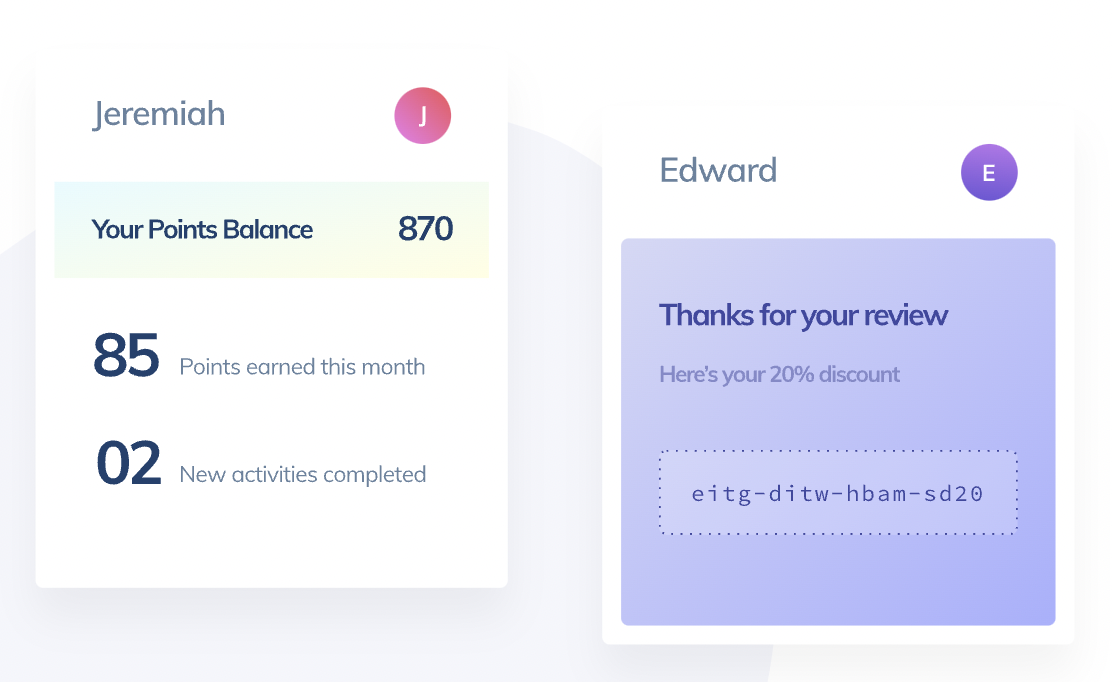
For example, LIVELY used LoyaltyLion to award customers with extra points for each tier unlocked by weaving in loyalty program messaging in their emails.
As a result, LIVELY increased their average number of orders by 37%, and their average customer spend by 36% in just a year.
Step 3: Launch your program
Before launch, encourage existing customers to sign up in beta mode (perhaps they receive a special bonus gift for doing so or for referring friends?) to jumpstart things.
After you launch, continue to refine your program so it’s beneficial to both your customers and your brand.
For example, you may find your program is too complicated or that it doesn’t offer enough rewards to be enticing. Talk to your customers and gather their feedback on the program for future optimizations.
Lastly, it’s important to make sure your website can handle the uptick in site traffic your program will yield.
You don’t want your website performance to suffer because of your program and vice versa. Choose store apps that bring a lot of value (replacing several individual apps) and can reduce the weight of each page.
Shogun Page Builder is a great tool that checks those boxes, enabling you to design store pages, capture subscribers with forms, build excitement with countdown timers, and more, all while lazy loading images and minifying page HTML to speed things up.
#cta-visual-pb#<cta-title>Grow your business with strategic landing pages<cta-title>Craft the ideal experience for your visitors and optimize your landing pages for maximum conversions.Start designing for free
Best practices of successful loyalty programs
As we mentioned earlier, not all customer loyalty programs are built the same. Let’s walk through a few best practices to keep in mind when designing your customer loyalty program.
Make it easy to sign up for and understand
Customer loyalty programs that are too complex could send customers running the other way.
Make sure you clearly state throughout your site or landing page what the benefits of joining are along with any FAQs or important details customers should know.
An example of a too-complicated customer loyalty program is Old Navy.
Old Navy offers a loyalty program that requires sign-up, but they also offer Super Cash which acts more like limited-time coupons.
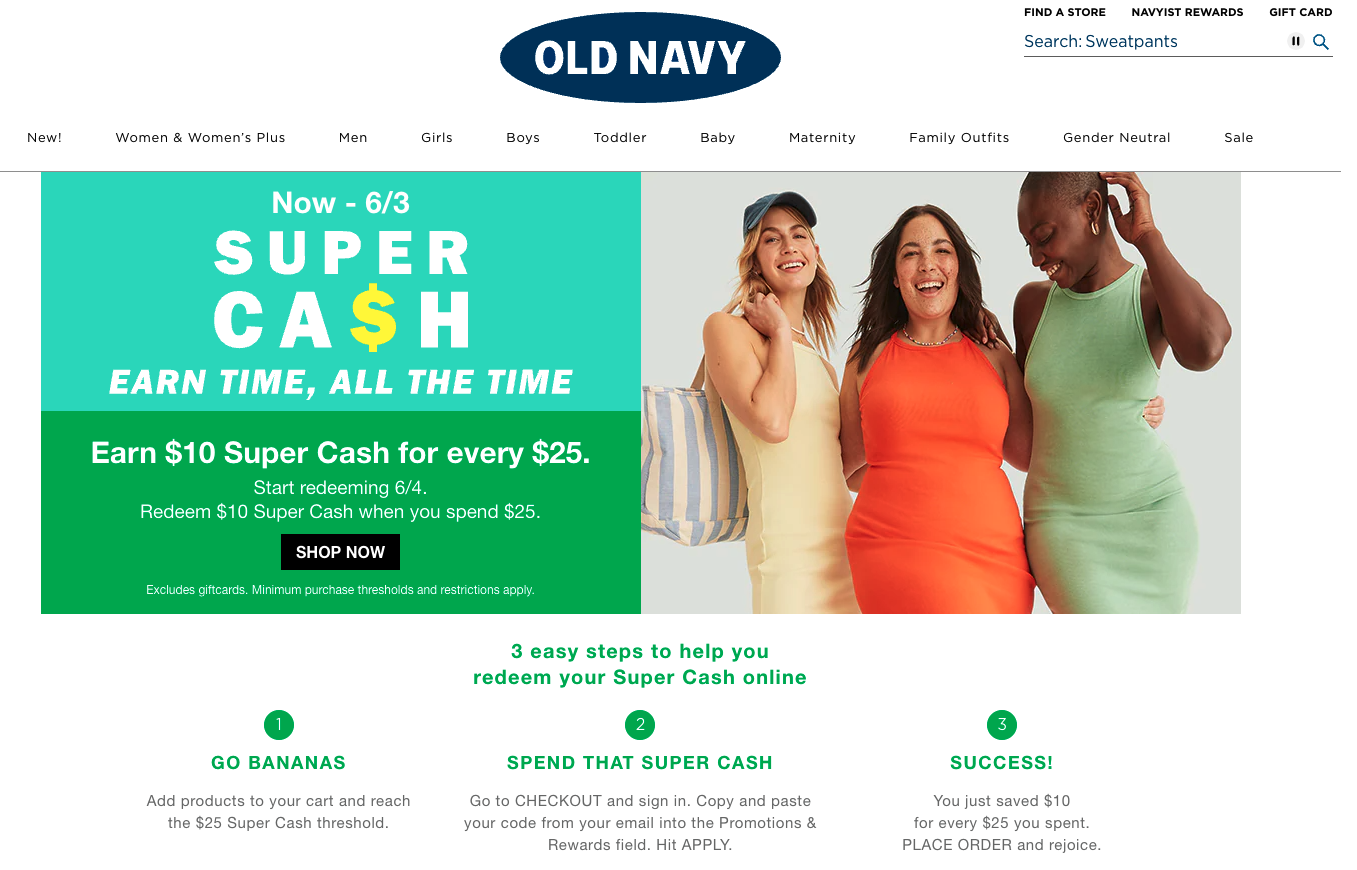
All these discounts and offerings can make it difficult for customers to understand which program they’re part of and which is suitable for their spending habits.
Instead, err on the side of simplicity. Stick to one program or mark a clear line in the sand of the differences between multiple programs.
Offer a balanced amount of rewards
Hear us out…you don’t want to offer too many rewards. This could jeopardize your sales—and brand image.
Plus, if you reward customers who purchase from you regularly anyway too often, they could resort to only shopping at discounted rates or with points.
That’s why it’s key to figure out, based on your customers and brand, which customer loyalty program type is best. Striking a balance between value for you and your customer is where brands succeed with these programs.
Ensure it’s omnichannel
To make your customer loyalty program stand out, consider:
- How shoppers will engage with your program across channels, and
- What might need to change about your existing website to accommodate the experience
Brands using an omnichannel approach to market campaigns like this see a 494% higher order rate than brands using just one channel.
Will you build an ecommerce mobile app to accompany your program? How will you leverage your social channels or SMS marketing to create a unique experience for loyalty program members? The creative possibilities are endless!
Successful customer loyalty programs can propel your brand forward
When executed right, customer loyalty programs are a powerful way to build lasting relationships with your customers and keep them coming back (and talking about your brand).
To grow your loyalty program, you need great landing pages that persuade them to join and spread the good word.
Just as every page on your store has the potential to convert a shopper to a customer, your loyalty landing page can turn a repeat customer into a loyal one.
#cta-visual-pb#<cta-title>Increase sales with the right landing page<cta-title>Design the perfect landing page that catches your visitors’ attention and drives conversions.Start building for free

Kaitlyn Ambrose
Kaitlyn works on all things content at Shogun. ⚡



